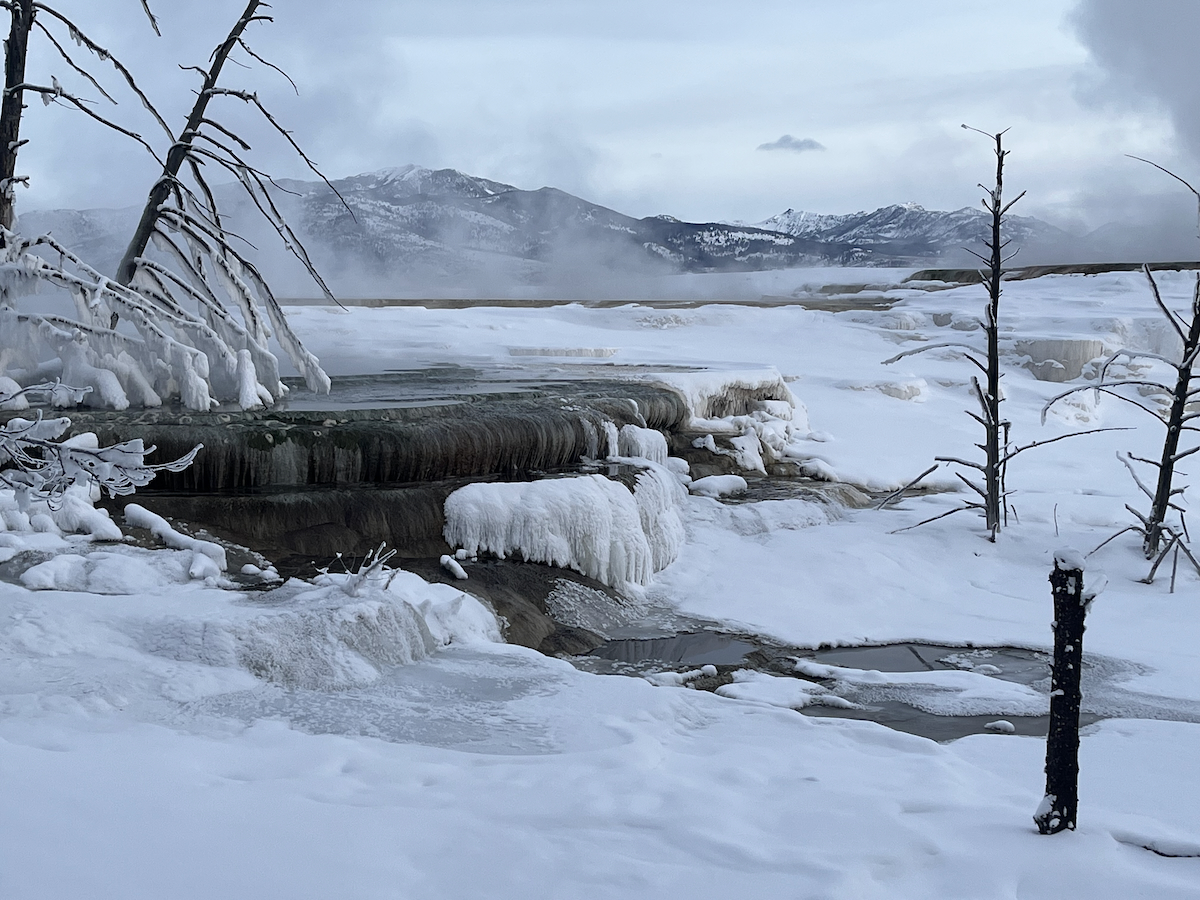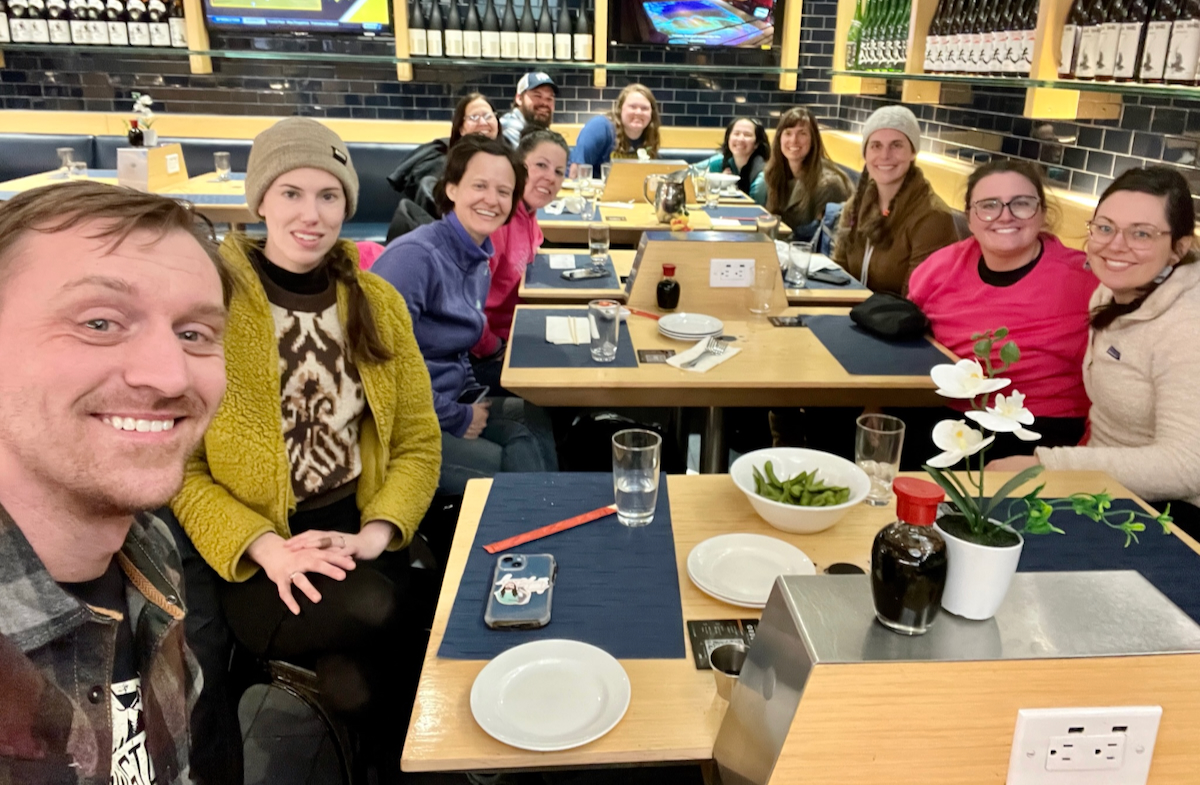
This morning Yellowstone treated us to another amazingly beautiful sunrise. We stopped to appreciate the beauty before heading to the Mammoth Hot Springs to meet with Erin and Kieran, two members of the park’s geology crew, and Mike Coonan, an education ranger for the park.

Sunrise from Mammoth Hot Springs
As we walked the boardwalk, we learned about how the geology of Mammoth Hot Springs differs from that of the geyser basins in the southern part of the park. The Mammoth Hot Springs form terraces made of travertine, which comes from hot water dissolving limestone. The dissolved minerals precipitate out of the water to form the travertine terraces. The terraces grow very quickly, sometimes more than a foot a year! We even saw trees that previously were growing in the dirt and are now being swallowed by the travertine.

Canary Spring at Mammoth Hot Springs, surrounded by dead trees
The park geologists also talked to us about some of their work in the park, ranging from piecing together the history of various areas of the park to being trained how to walk near thermal features in order to take measurements and retrieve trash that people lose in the hot springs and geysers, either accidentally or intentionally. A few decades ago, scientists working for the park occasionally took a small boat out on the hot springs to measure the depth. Erin and Kieran are very glad that they don’t have to do that anymore because many of the springs are close to the boiling point! The education ranger, Mike, reminded us of how special Yellowstone is. The 2.2 million acres of the park contain an intact ecosystem that is preserved and largely untouched by human development. Yellowstone’s wilderness today is very similar to how it was when the first indigenous peoples were using the area at the end of the last ice age approximately ~11,000 years ago.
After spending the morning at Mammoth Hot Springs, we packed up and headed to Bozeman to catch our flight back to North Carolina.

Group at dinner in the Minneapolis airport celebrating Tracy’s birthday tomorrow!
On this trip, we were pushed out of our comfort zones by challenging snowshoe hikes, extreme cold, and even by taking the leap to fly across the country with a group of strangers. We proved to ourselves that we can do hard things and even thrive in challenging situations. (Having the right gear really helps!) We are exhausted, rejuvenated, and in awe of Yellowstone’s vast magnificence. We are walking back into our classrooms full of excitement and ready to share all we learned about ecology, geology and history. We hope to share with our students the understanding that nature is interconnected, fragile, and important to conserve.
“In the end, we will conserve only what we love; we will love only what we understand, and will understand only what we are taught.”
– Baba Dioum
